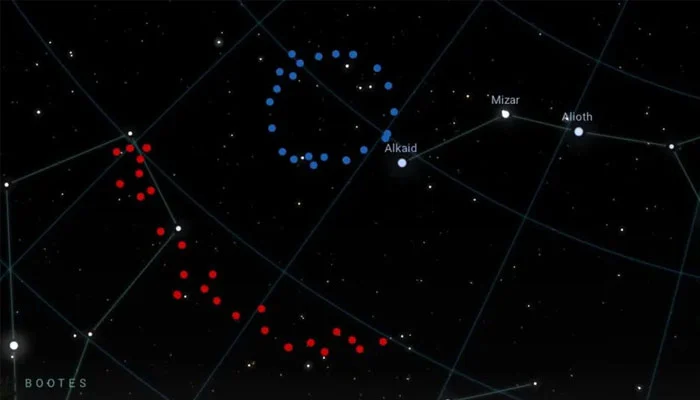Scientists at the University of Central Lancashire have stumbled upon an astronomical anomaly: a colossal ring structure in space that challenges our conventional understanding of the universe.
Called the “Great Ring” by astronomers, this colossal formation is a staggering 1.3 billion light-years across, which is approximately 15 times the apparent size of the Moon in Earth’s night sky.
The Great Ring, which is made up of galaxies and clusters of galaxies, presents a significant puzzle that directly contradicts the cosmological principle—the fundamental principle that enforces the uniform distribution of matter throughout the universe.
According to this principle, vast structures like the Great Ring should not exist. Dr. Robert Massey, deputy director of the Royal Astronomical Society, acknowledges that the growing evidence of such structures challenges accepted astronomical theories and warrants a reassessment of our understanding of the universe.
The identification of the Great Ring was accidental, credited to Alexia Lopez, a PhD student at UCLan. In addition to this colossal structure, Lopez also uncovered a “Giant Arc” spanning a whopping 3.3 billion light-years of space.
Appearing relatively close together in the constellation Bootes the Herdsman, both structures defy easy explanation within the current cosmological framework.
Professor Don Pollacco of the University of Warwick suggests a potential relationship between the two structures forming an even larger cosmic entity. There is speculation that these structures are remnants from the early universe, where waves of high- and low-density material “frozen” into the extragalactic medium.
Also read: Every one in 10 girls once consumed weight loss pill: study
The cosmic mystery deepens as researchers grapple with the challenge of explaining the formation of such colossal structures. While other large structures like the Sloan Great Wall and the South Pole Wall have been discovered, the Big Ring adds a new layer to the cosmic mystery.
Lopez’s analysis suggests that the Great Ring, while seemingly a perfect ring, has a more complex spiral shape, similar to a corkscrew, with its face aligned with Earth.
The findings, presented at the 243rd meeting of the American Astronomical Society in New Orleans, invite a rethinking of our understanding of the evolution of the universe as scientists grapple with the profound implications of these cosmic revelations.





